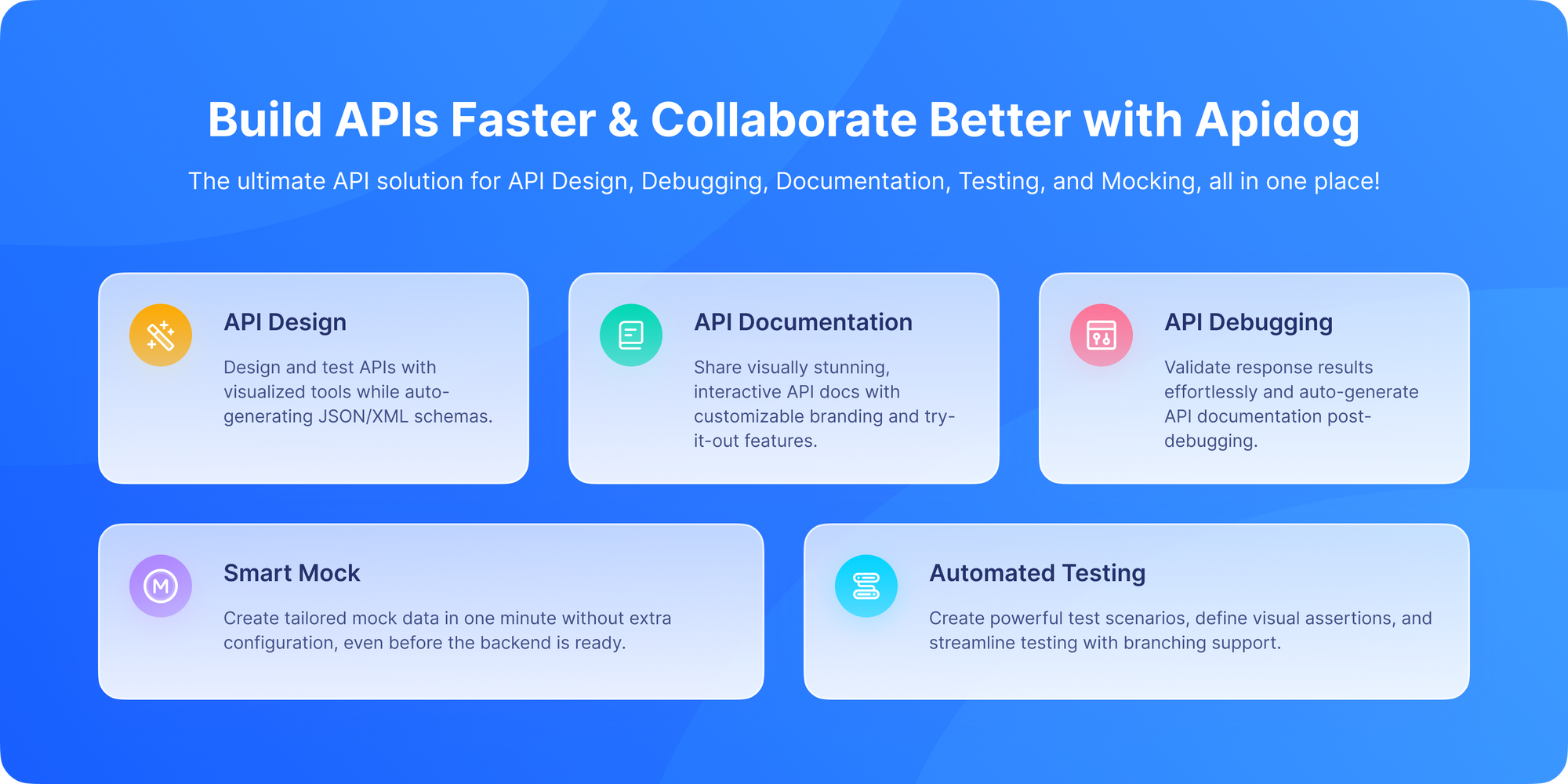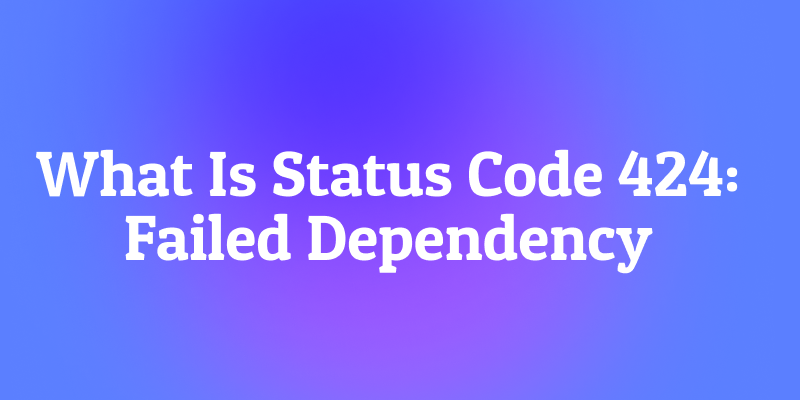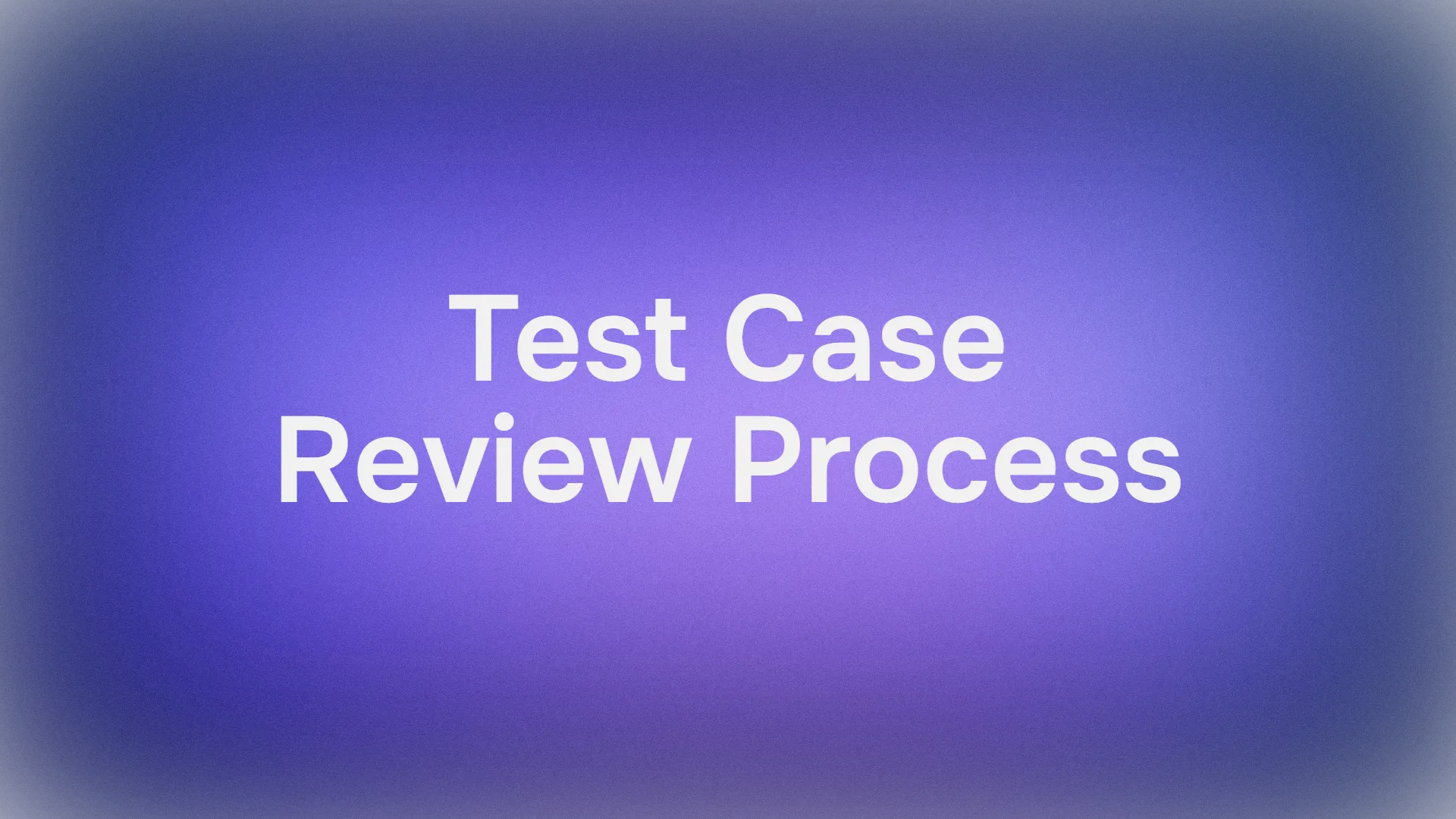You're organizing a complex project with multiple dependent tasks. Task B can't start until Task A finishes. Task C depends on both A and B. If Task A fails, the whole chain collapses. This domino effect isn't just a project management challenge it's a fundamental problem in distributed systems, and there's an HTTP status code specifically designed to communicate it: 424 Failed Dependency.
This status code comes from the world of WebDAV (Web Distributed Authoring and Versioning), an extension of HTTP for collaborative file management. It addresses a very specific but crucial scenario: what happens when one operation in a chain of dependent operations fails, making it impossible to complete the entire request?
It’s one of those status codes that can leave developers scratching their heads. It doesn’t sound as familiar as 404 Not Found or 500 Internal Server Error, yet it carries an important meaning especially when dealing with complex, chained requests or dependencies between resources.
It's the server's way of saying, "I couldn't complete your main request because one of the other operations it depends on failed first. It's not your fault, and it's not necessarily my fault it's just that the preconditions weren't met."
But don't worry! In this guide, we'll break it all down in plain English. You'll learn:
- What HTTP 424 Failed Dependency actually means
- Why it occurs
- How to fix it
- And how tools like Apidog can help you diagnose it effortlessly
If you work with complex APIs, distributed systems, or applications that require atomic operations across multiple resources, understanding 424 provides valuable insight into handling dependency failures gracefully.
Now, let's explore the world of dependent operations and the HTTP 424 Failed Dependency status code.
Setting the Stage: The World of WebDAV
To understand 424, we need to understand its origin in WebDAV. WebDAV extends HTTP to allow clients to collaboratively edit and manage files on a remote server. It introduces methods like:
PROPFIND- retrieve propertiesPROPPATCH- set and delete multiple propertiesMKCOL- create a collection (like a folder)COPYandMOVE- for file operations
These operations often involve multiple dependent actions. For example, moving a folder requires:
- Creating the folder in the new location
- Moving all the files within it
- Setting the same properties
- Deleting the original folder
If any step fails, the entire operation should fail atomically.
What Does HTTP 424 Failed Dependency Actually Mean?
The 424 Failed Dependency status code indicates that the method could not be performed on the resource because the requested action depended on another action that failed.
The official RFC 4918 defines it as:
The 424 status code indicates that the method could not be performed on a particular resource within its scope because some part of the method's execution failed causing the entire method to be aborted.
In simpler terms: "I was trying to do what you asked, but one of the necessary prerequisites failed, so I had to cancel the whole operation."
A typical 424 response might look like this:
HTTP/1.1 424 Failed DependencyContent-Type: application/xml
<?xml version="1.0" encoding="utf-8" ?>
<d:error xmlns:d="DAV:"><d:failed-dependency><d:href>/files/document.pdf</d:href><d:reason>Lock token required but not provided</d:reason></d:failed-dependency></d:error>
Think of it as a domino effect in HTTP communication if one piece falls, the others can’t stand.
This status code was first defined in RFC 4918, which expanded HTTP to support WebDAV (Web Distributed Authoring and Versioning) a protocol that enables collaborative editing and file management over the web.
The Mechanics: How Dependencies Fail
Let's walk through a concrete example from the WebDAV world.
Scenario: Setting Multiple Properties with PROPPATCH
Imagine a client wants to set three properties on a file in one atomic operation:
1. The Client Request:
PROPPATCH /files/report.pdf HTTP/1.1
Host: dav.example.comContent-Type: application/xml
<?xml version="1.0"?>
<propertyupdate xmlns="DAV:"><set><prop><author>John Doe</author><status>draft</status><department>finance</department></prop></set></propertyupdate>
2. Server Processing: The server starts processing each property:
- Sets
authorto "John Doe" - SUCCESS - Sets
statusto "draft" - SUCCESS - Tries to set
departmentto "finance" but encounters an error (maybe the "department" property has validation that fails)
3. The 424 Response: Because this is an atomic operation and one property failed, the server must roll back the entire operation and respond:
HTTP/1.1 424 Failed DependencyContent-Type: application/xml
<?xml version="1.0"?>
<error xmlns="DAV:"><failed-dependency><href>/files/report.pdf</href><reason>Department validation failed: 'finance' is not a valid department</reason></failed-dependency></error>
The server would also revert the successful author and status changes to maintain atomicity.
How 424 Failed Dependency Works (With Example)
To understand how 424 works, let's look at a simple example from WebDAV, where this status code originates.
Scenario: Two Linked Requests
Request 1: LOCK /file.txt
The client tries to lock a file for editing.
- Response: ❌ Lock fails (for example, resource is already locked).
Request 2: UPDATE /file.txt
The client then tries to modify the same file, expecting it to be locked.
- Response: 424 Failed Dependency because the lock operation failed earlier.
In this case, the second request didn't fail by itself. It failed because its prerequisite (the lock) wasn't successful.
This is exactly what 424 means.
Why 424 Matters: The Principle of Atomicity
The 424 status code embodies several important distributed systems principles:
1. Atomic Operations
Either all operations succeed, or none do. This prevents partial updates that could leave data in an inconsistent state.
2. Clear Failure Communication
Instead of returning a generic 500 Internal Server Error or worse succeeding partially without telling the client 424 provides specific information about what failed and why.
3. Dependency Management
It acknowledges that modern systems often involve complex dependency graphs, and failures need to be communicated in a way that reflects these relationships.
Modern Applications Beyond WebDAV
While born in WebDAV, the concept behind 424 is relevant to many modern API scenarios:
1. Database Transactions
When you have a transaction that updates multiple tables, and one update fails due to a foreign key constraint or validation error, the entire transaction should roll back.
2. Microservices Orchestration
In a microservices architecture, an operation might require calls to multiple services. If the "payment service" fails, the "order service" might return a 424 indicating the dependency on the payment operation failed.
3. File Processing Pipelines
A document processing system might have dependencies between different processing steps (OCR → text analysis → categorization). If OCR fails, the subsequent steps cannot proceed.
424 vs. Other Error Codes: Knowing the Difference
It's important to distinguish 424 from other client and server error codes:
424vs.400 Bad Request:400indicates the request was malformed.424indicates the request was well-formed but couldn't be completed due to a dependency failure.424vs.409 Conflict:409is about conflicts with the current state of the resource (like version conflicts).424is about failures in dependent operations.424vs.500 Internal Server Error:500is a generic server failure.424is more specific—it tells the client that their request was understood but couldn't be completed due to a failed dependency.
Why 424 Happens: Common Causes
Here are the most common reasons you’ll encounter this status code:
1. Dependent Request Failed
Your operation depends on another API call or action that didn’t succeed.
2. Chained Transaction Failure
In a multi-step workflow, one failed step causes others to cascade into 424 errors.
3. Broken Microservice Link
If one backend service fails (timeout, 500, 503), another depending on it might respond with 424.
4. Logic or Conditional Check Failure
Sometimes APIs use logic-based dependencies if condition A isn’t met, operation B can’t proceed.
5. Automation or Batch Error
Automated jobs, pipelines, or scripts that run tasks sequentially can trigger 424s when a preceding task fails.
Testing APIs Effortlessly with Apidog

Testing how your API handles dependency failures is crucial for building robust systems. Apidog provides excellent tools for this type of testing.
With Apidog, you can:
- Mock Dependent Services: Create mock endpoints for the services your main API depends on. You can configure these mocks to return specific error responses.
- Test Failure Scenarios: Set up a scenario where a dependent service returns a
424(or any other error) and verify that your main API handles it correctly. - Validate Atomicity: Test multi-step operations to ensure that when one step fails, the system properly rolls back previous steps.
- Create Complex Workflows: Build test scenarios that simulate entire dependency chains and verify that errors propagate correctly.
- Debug Dependency Issues: Use Apidog's detailed logging to trace exactly where in a dependency chain a failure occurred.
For example, you could create a test where:
- Service A (mock) succeeds
- Service B (mock) returns a
424 - Verify that your main API properly handles the partial failure and doesn't leave data in an inconsistent state.
Implementation Patterns and Best Practices
For API Developers:
- Use 424 Judiciously: Only use
424when you're implementing true atomic operations with dependencies. Don't use it for simple validation errors. - Provide Detailed Error Information: Include information about which dependency failed and why in the response body.
- Ensure Atomic Rollback: If you return a
424, make sure you've actually rolled back any partial changes. - Consider Alternatives: For non-atomic operations, consider whether
400 Bad Requestor409 Conflictmight be more appropriate.
For Client Developers:
- Handle 424 Gracefully: When you receive a
424, understand that the entire operation failed and no partial changes were applied. - Retry Logic: Depending on the error details, you might be able to fix the underlying issue and retry the entire operation.
- Log Dependency Information: The error details in a
424response can be invaluable for debugging complex workflow issues.
Preventing 424 Failed Dependency Errors
While you can’t prevent all dependency failures, you can minimize them with smart API design and workflow management.
1. Reduce Hard Dependencies
Try to design your API endpoints to be independent when possible.
The fewer dependencies, the fewer 424 risks.
2. Validate Prerequisites Early
Check that prerequisites exist before running dependent logic.
3. Implement Atomic Transactions
Use atomic transactions in your database or services to avoid partial failures.
4. Return Meaningful Error Messages
Always explain which dependency failed and why. Don’t just say “failed dependency.”
5. Use Retry and Circuit Breakers
In distributed systems, temporary network or service issues can trigger cascading 424s. Use retry mechanisms or circuit breakers to contain them.
Modern Alternatives and Evolution
While 424 is specific to WebDAV, the concept has evolved in modern API design:
1. Saga Pattern
In microservices, the Saga pattern provides a way to manage distributed transactions without relying on a single atomic operation. Each service handles its part, and compensating transactions handle rollbacks.
2. GraphQL Error Handling
GraphQL has built-in support for partial successes and detailed error reporting, which can handle dependency failures more gracefully than traditional REST APIs.
3. Custom Error Payloads
Many modern APIs use 400 Bad Request or 422 Unprocessable Entity with detailed error payloads that describe dependency failures, rather than using the WebDAV-specific 424.
Conclusion: The Chain is Only as Strong as Its Weakest Link
The HTTP 424 Failed Dependency status code represents an important concept in distributed systems: operations often depend on other operations, and when those dependencies fail, we need clear ways to communicate what happened.
While you may not use 424 directly in most modern API development (unless you're working with WebDAV), understanding the principles it represents is crucial for building robust, reliable systems. The need for atomic operations, clear error communication, and proper dependency management is universal.
Whether you're working with database transactions, microservices, or complex file operations, the lessons from 424 apply: design your systems to handle dependency failures gracefully, communicate errors clearly, and maintain data consistency.
And when you're building and testing these complex systems, a comprehensive tool like Apidog can help you simulate dependency failures, verify atomic behavior, and ensure your APIs handle the inevitable failures in complex workflows with grace and clarity.



